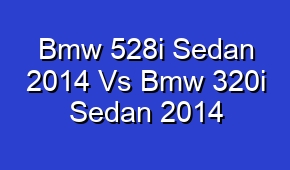Dodge Charger 2015 Vs Mercedes Eqc 400 4matic 2021

Get ready to compare the powerful performance of the Dodge Charger 2015 with the cutting-edge technology of the Mercedes EQC 400 4MATIC 2021. Discover the key differences between these two impressive vehicles and find out which one is the perfect fit for your driving needs.
| Feature | Dodge Charger 2015 | Mercedes EQC 400 4MATIC 2021 |
|---|---|---|
| Engine Type | Gasoline | Electric |
| Engine Size | 3.6L V6 | Electric Motor |
| Horsepower | 292-707 HP | 402 HP |
| Torque | 260-650 lb-ft | 561 lb-ft |
| Transmission | 8-speed automatic | Single-speed automatic |
| Drive Type | Rear-Wheel Drive (optional All-Wheel Drive) | All-Wheel Drive |
| Acceleration (0-60 mph) | 3.4-7.2 seconds | 4.8 seconds |
| Top Speed | 155-204 mph | 112 mph (electronically limited) |
| Battery Capacity | N/A | 80 kWh |
| Range | N/A | 220-259 miles |
| Charging Time (Level 2) | N/A | ~11 hours |
| Charging Time (DC Fast Charging) | N/A | ~40 minutes (80% charge) |
| Seating Capacity | 5 | 5 |
| Cargo Space | 16.5 cu ft | 17.6 cu ft |
| Infotainment System | Uconnect 8.4-inch touchscreen | Mercedes-Benz User Experience (MBUX) 10.25-inch touchscreen |
| Apple CarPlay | Available | Available |
| Android Auto | Available | Available |
| Safety Features | Basic safety features | Advanced driver assistance systems |
Engine Type
The Dodge Charger 2015 is powered by a gasoline engine, while the Mercedes EQC 400 4MATIC 2021 is an electric vehicle.
Engine Size
The Dodge Charger 2015 is equipped with a 3.6L V6 engine, whereas the Mercedes EQC 400 4MATIC 2021 is powered by an electric motor.
Horsepower
The Dodge Charger 2015 offers a horsepower range of 292 to 707 HP, while the Mercedes EQC 400 4MATIC 2021 delivers 402 HP.
Torque
The Dodge Charger 2015 provides a torque range of 260 to 650 lb-ft, while the Mercedes EQC 400 4MATIC 2021 offers 561 lb-ft of torque.
Transmission
The Dodge Charger 2015 features an 8-speed automatic transmission, while the Mercedes EQC 400 4MATIC 2021 has a single-speed automatic transmission.
Drive Type
The Dodge Charger 2015 comes with rear-wheel drive as standard, with an optional all-wheel drive. The Mercedes EQC 400 4MATIC 2021 has all-wheel drive.
Acceleration (0-60 mph)
The Dodge Charger 2015 has an acceleration time ranging from 3.4 to 7.2 seconds, whereas the Mercedes EQC 400 4MATIC 2021 achieves 0-60 mph in 4.8 seconds.
Top Speed
The Dodge Charger 2015 has a top speed range of 155 to 204 mph, while the Mercedes EQC 400 4MATIC 2021 is electronically limited to 112 mph.
Battery Capacity
The Dodge Charger 2015 does not have a battery as it is not an electric vehicle. The Mercedes EQC 400 4MATIC 2021 has a battery capacity of 80 kWh.
Range
The Dodge Charger 2015 does not have an electric range. The Mercedes EQC 400 4MATIC 2021 offers a range of 220 to 259 miles on a full charge.
Charging Time (Level 2)
The Dodge Charger 2015 does not require charging. The Mercedes EQC 400 4MATIC 2021 takes approximately 11 hours to charge using a Level 2 charger.
Charging Time (DC Fast Charging)
The Dodge Charger 2015 does not support DC fast charging. The Mercedes EQC 400 4MATIC 2021 can charge up to 80% in around 40 minutes using DC fast charging.
Seating Capacity
Both the Dodge Charger 2015 and the Mercedes EQC 400 4MATIC 2021 have a seating capacity of 5 passengers.
Cargo Space
The Dodge Charger 2015 offers 16.5 cubic feet of cargo space, while the Mercedes EQC 400 4MATIC 2021 provides 17.6 cubic feet of cargo space.
Infotainment System
The Dodge Charger 2015 features a Uconnect 8.4-inch touchscreen infotainment system, whereas the Mercedes EQC 400 4MATIC 2021 comes with the Mercedes-Benz User Experience (MBUX) 10.25-inch touchscreen infotainment system.
Apple CarPlay
Both the Dodge Charger 2015 and the Mercedes EQC 400 4MATIC 2021 support Apple CarPlay integration.
Android Auto
Both the Dodge Charger 2015 and the Mercedes EQC 400 4MATIC 2021 are compatible with Android Auto.
Safety Features
The Dodge Charger 2015 offers basic safety features, while the Mercedes EQC 400 4MATIC 2021 incorporates advanced driver assistance systems for enhanced safety.





















